
齋藤 茂
(さいとう・しげる)
Shigeru Saito
略歴
- 東京都立大学大学院理学研究科博士課程修了
- 岩手大学研究員、生理学研究所研究員、助教を歴任
進化生理学研究室
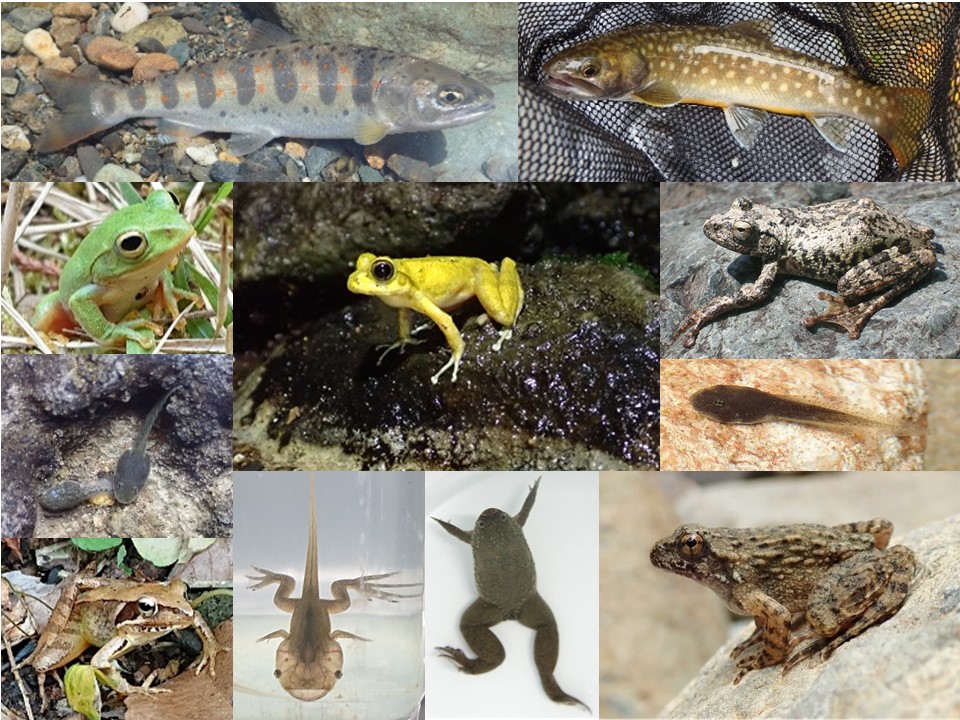
卒業研究テーマ例
- 両生類やサケ科魚類の温度応答行動や温度センサー分子の比較
- 温度センサー機能の進化的変化を生み出す分子メカニズムの探究
- 温度センサー遺伝子を破壊したカエルの行動解析
- 野外調査による繁殖時期や生息環境が異なる両生類種の比較
異なる環境に生息する動物種の温度応答行動の比較解析
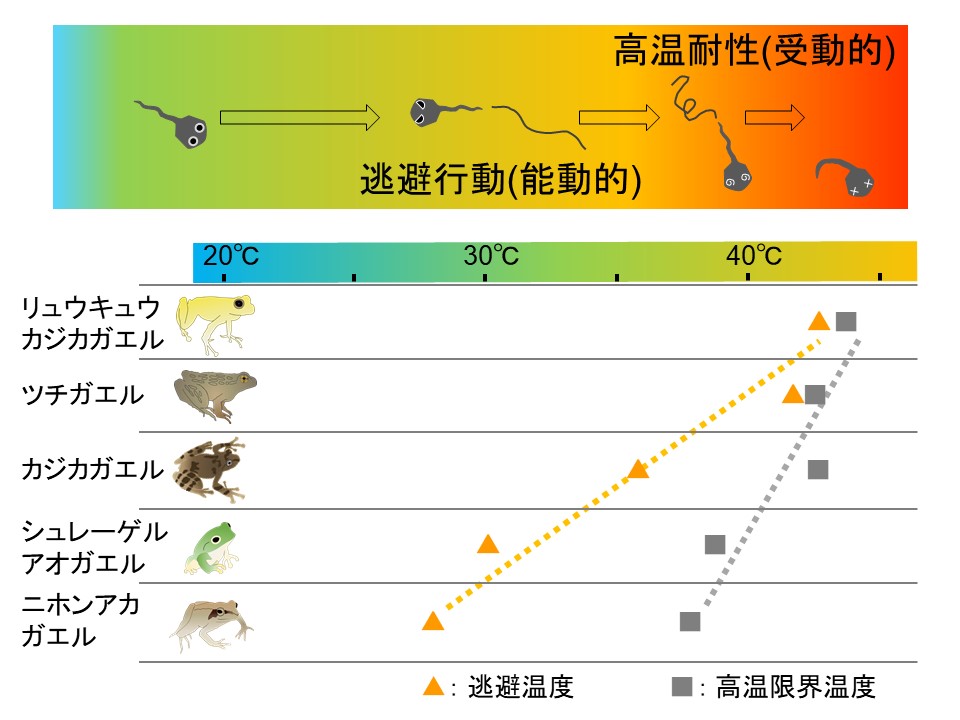
温度センサーの機能変化を生み出す分子メカニズムの解明
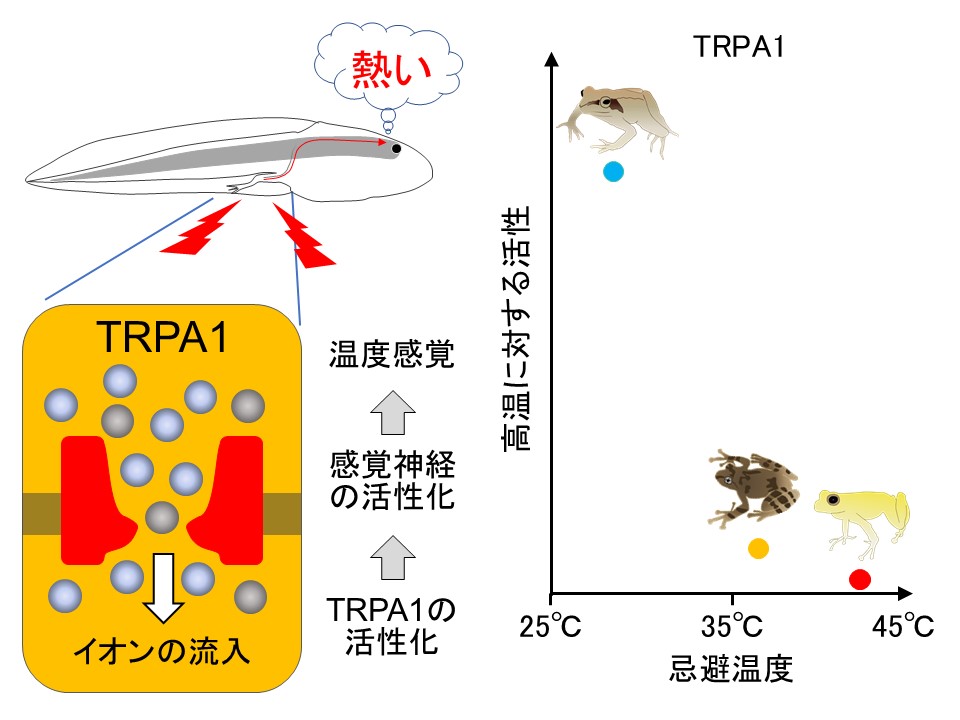
温度応答行動の可塑性の分子基盤の解明
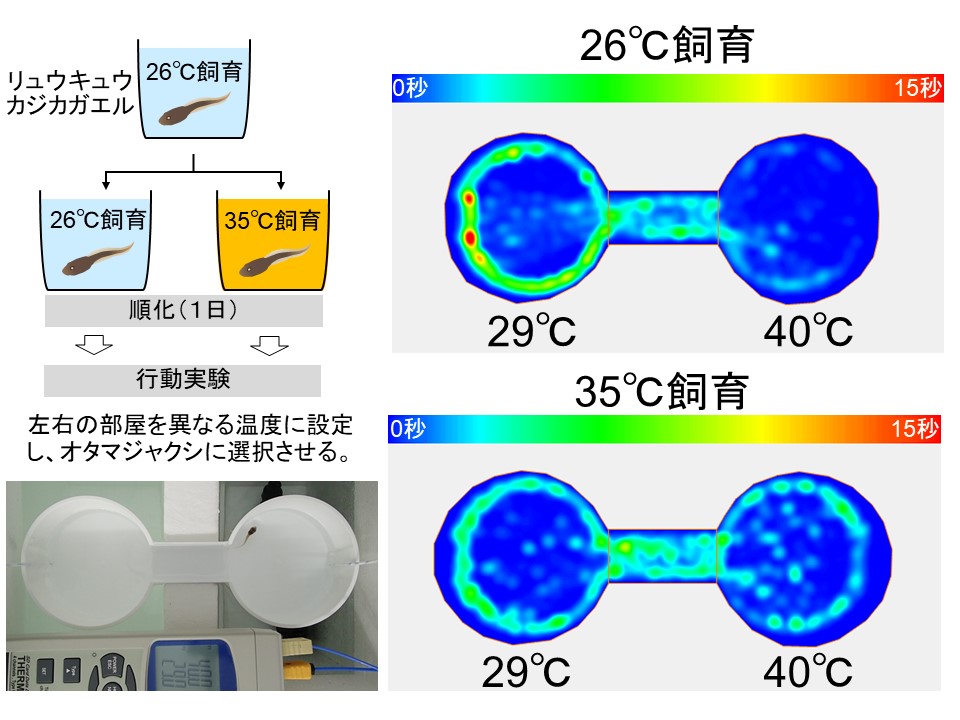
ゲノム重複を経験したサケ科魚類の温度受容機構の解析
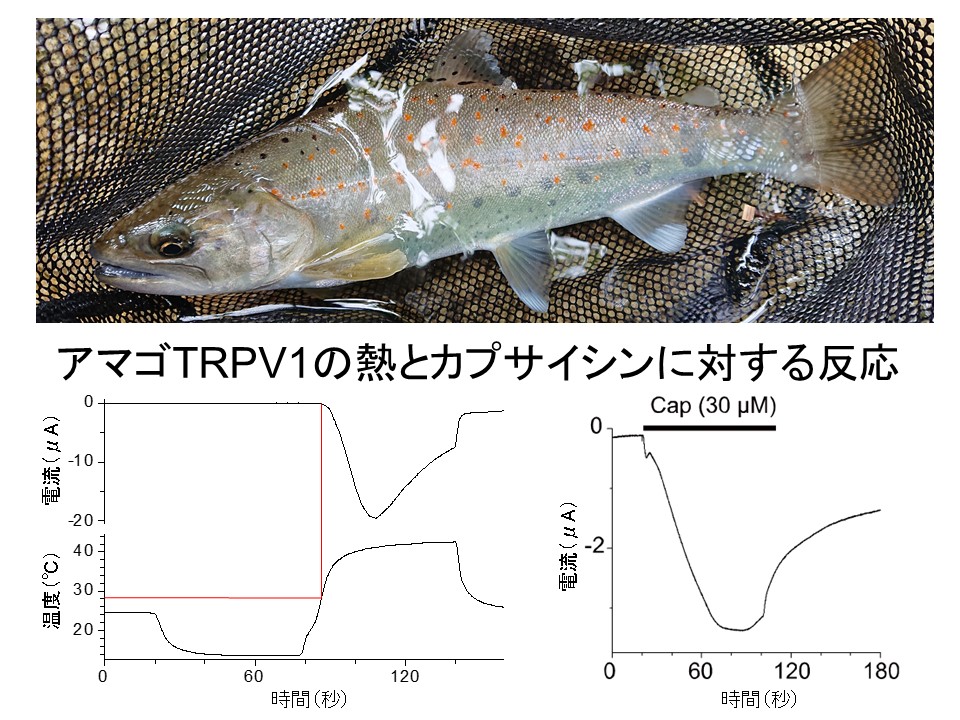
- 研究の応用領域
- 忌避剤・医薬品の開発、養殖動物の改良
- 産官学連携で求めるパートナー
- 水産養殖、有害生物防除、医薬品の開発に関連する企業、大学・自治体の研究機関
Evolutionary Physiology Lab
Animals developed “thermosensory system” during their long evolutionary history to adapt to changing ambient temperatures, which significantly affect various biological processes. To understand the evolutionary processes of thermal perception and correlate its changes with environmental adaptation, we employ various approaches, ranging from field observations to laboratory experiments at the molecular level, using diverse animal species.
Examples of graduation research theme
・Comparison of behavioral responses to temperature and thermosensory molecules in amphibians and fishes.
・Investigation of the molecular mechanisms underlying the evolutionary changes of thermal sensors
・Behavioral assays using knockout frogs for thermosensory genes.
・Comparisons among frog species differing in breeding seasons and microhabitats through field observations.
Comparative analysis of behavioral responses to temperature using species inhabiting diverse environments
Animals adapt to diverse thermal environments, from polar to tropic regions. Even species inhabiting the same area sometimes experience different thermal conditions due to the variation in their active times, breeding seasons, and microhabitats. To elucidated the mechanisms of diversification in behavioral responses to temperature, we focus on amphibian tadpoles endemic to Japan. Environmental temperatures are measured in their habitats and tadpole’s behaviors are observed in the field. Furthermore, behavioral assays are performed in the lab to compare the upper thermal limit and avoidance temperatures among species. Through these approaches, we investigate how thermal tolerance and avoidance behaviors have evolved to fit with habitat environments.
Molecular basis for the functional alteration of thermal sensors
Perception of ambient and body temperatures is pivotal for exerting proper avoidance behaviors. Transient Receptor Potential (TRP) ion channels serve as sensors for the signal transduction of thermal perception. We compare the TRP channels among species exhibiting different behavioral responses to temperature and also searching for the amino acid changes responsible for their functional alteration during the adaptation processes. Through these approaches, we aim to clarify the correlation between evolutionary changes of thermal sensors and environmental adaptation. In addition, TRP channels also serve as chemical sensors, therefore, we also investigating their species diversity against chemical compounds.
Elucidation of molecular basis of plasticity in behavioral responses to temperature
Behavioral responses to temperature can be altered by prior experiences. Tadpoles of Buergeria japonica avoid temperatures higher than 36°C when reared at 26°C, although they can tolerate up to 42°C. However, after being exposed to 35°C for a single day, tadpoles increase their avoidance temperature up to 42°C. Such plasticity in avoidance behaviors can be interpret as tadpoles optimizing their behavioral responses to temperature with seasonal changes. We are attempting to elucidate the molecular basis for the plasticity of heat avoidance behavior.
Investigation on the effect of genome duplication on the thermosensory system in salmonids
The evolutionary processes of TRP channels are investigated through molecular evolutionary approaches by utilizing genome sequence data from several salmonid species that experienced genome duplication in their ancestral states. By characterizing salmonid TRP channels, we are investigating whether their functional properties altered after the genome duplication event that occurred in the most recent common ancestor of salmonid species. These approaches will elucidate the effect of genome duplication on thermosensory systems, which might have been shaped by cool habitat conditions.
Shigeru Saito, Claire T Saito, Takeshi Igawa, Nodoka Takeda, Shohei Komaki, Toshio Ohta, and Makoto Tominaga. Evolutionary tuning of transient receptor potential ankyrin 1 underlies the variation in heat avoidance behaviors among frog species inhabiting diverse thermal niches. Molecular Biology and Evolution, 39, msac180 (2022)
Shigeru Saito, Claire T. Saito, Masafumi Nozawa, and Makoto Tominaga. Elucidating the functional evolution of heat sensors among Xenopus species adapted to different thermal niches by ancestral sequence reconstruction. Molecular Ecology, 28, 3561-3571 (2019)
Shigeru Saito, Masashi Ohkita, Claire T. Saito, Kenji Takahashi, Makoto Tominaga, and Toshio Ohta. Evolution of Heat Sensors Drove Shifts in Thermosensation between Xenopus Species Adapted to Different Thermal Niches. The Journal of Biological Chemistry, 291, 11446-11459 (2016)
Shigeru Saito, Nagako Banzawa, Naomi Fukuta, Claire T. Saito, Kenji Takahashi, Toshiaki Imagawa, Toshio Ohta, and Makoto Tominaga. Heat and Noxious Chemical Sensor, Chicken TRPA1, as a Target of Bird Repellents and Identification of Its Structural Determinants by Multispecies Functional Comparison. Molecular Biology and Evolution, 31,708-722 (2014)
Shigeru Saito, Kazumasa Nakatsuka, Kenji Takahashi, Naomi Fukuta, Toshiaki Imagawa, Toshio Ohta, and Makoto Tominaga. Analysis of Transient Receptor Potential Ankyrin 1 (TRPA1) in Frogs and Lizards Illuminates Both Nociceptive Heat and Chemical Sensitivities and Coexpression with TRP Vanilloid 1 (TRPV1) in Ancestral Vertebrates. The Journal of Biological Chemistry, 287, 30743-30754 (2012)






